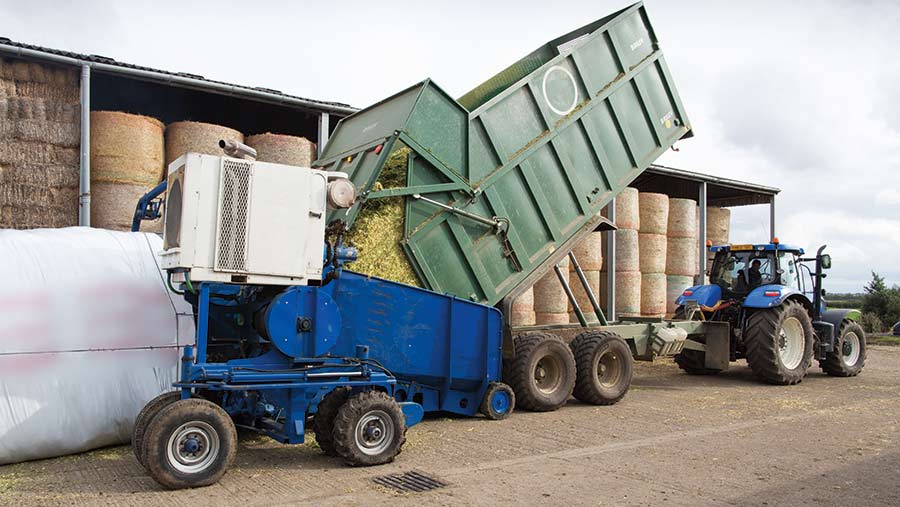Raise cutting height in big maize crops for higher quality
 © Tim Scrivener
© Tim Scrivener Maize growers are being advised to plan harvest and clamp management carefully this year to avoid losing valuable feed material, with yields up 15% in some regions.
“Early harvest results suggest yields could be up 2.5-5.0t/ha [1.0-2.0t/acre], with excellent quality too. Fields look consistent with few poorer patches and there are some really big crops out there,” said John Morgan of the Maize Growers Association.
Cob set looks good, but there is more leaf to dilute grains, so growers will need to make the right decisions around cutting height and maturity to make full use of the extra volume, warned Mr Morgan.
See also: Maize Watch: Harvest starts in east England
He said harvesting should still take place at 30% dry matter, but a higher-than-normal cut height should be considered.
Cutting height
“Conventional cut height is around 10-15cm, but in this year’s tall crops that could be too low and increasing it to 50cm could deliver significant benefits.
“In feeding trials, such an approach added 1.2% to dry matter, another 1.2% to starch content, 1.5% to NDF and 0.15MJ/kg DM to ME. All in all the advantage was an extra 0.25l a cow a day of milk from every kg fed,” added Mr Morgan.
He believes these quality improvements will all but make up for the drop in the volume of overall material harvested.
Storage
Cutting the crop higher could also help with storage, said Wilson Hendry of forage specialist Grainseed.
“The extra bulk could be a problem for many. If you don’t cut higher you’re probably going to have to ag-bag the extra or make a field clamp to accommodate the extra yield, but remember the Environment Agency will need two weeks’ notice before this.
“You can go higher in existing clamps, but you then face problems with aerobic stability during feed-out if you’re not careful and there are considerable safety issues when removing material from high clamps.”
Additives could help to counteract any issues of aerobic stability in extended or temporary storage, he said.
“Maize itself has lots of sugar and a low buffering capacity, so additives are not generally needed for fermentation, but they can play a role where feed-out is less than 1.5m per week in the winter and 2.5m per week in the summer to prevent heating at the face or feed passage.
“An oxygen scavenging additive is beneficial in these situations and an oxygen barrier sheet would be a good investment for all clamps this year.”
